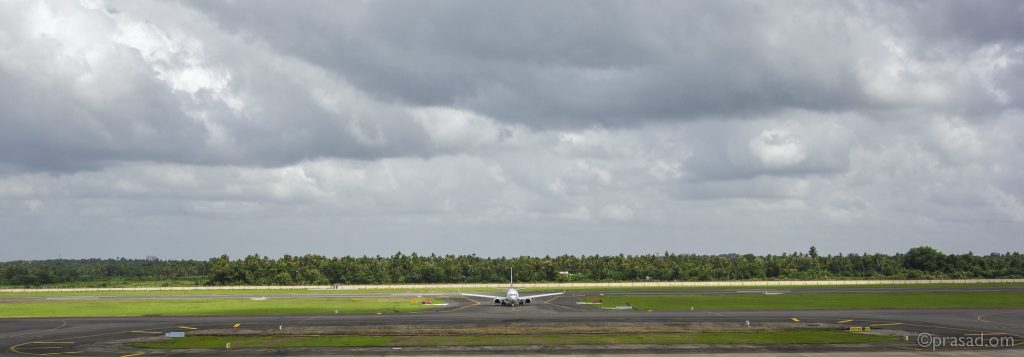How to fly more sustainably
Air travel remains the most polluting form of transport, but we know that it can’t always be avoided. Learn what to consider when it’s your only option.

Before we continue talking about sustainable travel, let’s remind ourselves why we care.
Aviation travel accounts for 2.5% of the global CO2 emissions. This figure is expected to rise to 3.5% by 2030, all driven by the growing demand of air travel.
We previously wrote about the benefits of train or bus travel vs. short-haul flights. However, for some journeys it’s just not realistic to use other forms of transport besides flying. Especially with long distances, you sometimes have to sacrifice too much comfort and time when limiting yourself to land-based transportation.
Take for example the journey from Hanoi to Hoi An, where the overland journey lasts at least 16 hours, while the flight only takes 1.5 hour. When considering these options, you’re basically comparing the following two options:
1. Do I want to spend almost a complete day on a bus and arrive totally exhausted to my destination?
2. Shall I take a flight so I have an extra day to explore the gorgeous old town of Hoi An?
We won’t blame you for choosing the latter….

In this post, we will share several factors to consider when flying is the only reasonable option. And as an extra bonus, we will briefly discuss how you can use offsetting programs to compensate for your carbon dioxide emissions.
Considering the environment when booking a flight
Not all airlines are built the same with some basic knowledge, we can help you to make a better informed decision.
Most airlines have a section on their website that is dedicated to environmental policies, in addition to the news section, which can be a great source of information. Take, for example, the Dutch airline, KLM. In a recent marketing campaign they actually urged people to fly less. No one can deny that they do not care about sustainability!
Before you book your next plane ticket, consider the following checklist:
5 important factors to consider when booking a flight
1. Aircraft maintenance procedures
Using a modern aircraft fleet is probably the most important factor.
Modern planes are equipped with the latest fuel saving technologies and are considered up to 80% more fuel efficient than the earliest commercial jet planes. It’s therefore very important to consider the average age of the fleet of the airline company before you book your flight.
The Airbus A350-900 or Boeing 787-9/8 are, for example, one of the most fuel efficient planes.
Another less obvious area where environmental savings can be made is the cleaning process of aircrafts. As you probably know, planes are huge! This means there is a lot of surface to clean, which require large volumes of water and chemicals. Some aircraft operators have invested in rain-collection methods to enable them to recycle rainwater for cleaning purposes. Others claim to have saved eight million liters of water a year from switching to a semi-dry washing method.
2. Aeroplane capacity
If there are multiple airlines operating flights on the same route, look into which airplanes have the largest passenger capacity.
By taking a flight with more passengers you can reduce your per passenger carbon footprint. And although flying business class can offer a lot more comfort, consider that this also takes up a lot more space and therefore significantly increases your personal carbon emissions.
3. Waste separation and recycling
Some airlines have implemented waste separation and recycling schemes during the flight or once the aircraft has landed.
If cabin crew pass through with a bin liner that is specifically for recyclable waste, set a good example by separating out your personal waste.
Some airlines also introduce policies to reduce the volume of waste produced on each flight. For instance, only providing sugar and milk sachets when passengers ask for them.
You can also help with these efforts to reduce waste by saying no to items you will not use. If you have taken your own bottle of water onboard, say no to cups of water (even though the cabin crew hands them out for free). I’m sure they will be happy to fill up your bottle instead.
4. Plane weight reduction
Reducing the weight of a plane and its fittings decreases the amount of fuel used during a flight.
Some airlines have taken actions such as removing trays from the backs of seats and reducing the weight of trolleys used for catering services. Modifications such as these increase the fuel efficiency of each flight and reduce the carbon footprint.
Reducing the weight of the plane is also something you can directly influence, as baggage constitutes a large percentage of the weight of any flight. You can reduce the weight you are contributing to a flight by thinking carefully about what to pack and leaving unnecessary items at home. Also, consider how pre-ordering meals can help the staff make a better decision about the number of meals to take on board.
5. Environmentally friendly meals
Instead of only pre-ordering a meal, you can go one step further, by considering a meatless option to reduce the environmental impact of your food.

Airlines respond to customer demand. Therefore choosing a vegetarian or vegan meal indicates to their analysts that there is growing demand for these options. Airlines are likely to respond to such trends by investing more money into developing a greater range of meat-free in-flight meal options.
The carbon offsetting debate
Several airlines and third party organisations offer the option to “carbon offset” your flight. In other words, you can compensate the CO2 emissions of your flight by contributing money to a project that improves the air quality.
The idea of carbon offsetting starts with identifying the amount of greenhouse gases produced by each passenger on a flight. With the compensation you will fund an initiative which produces the equivalent amount of green energy or absorbs the equivalent amount of carbon dioxide.
Unfortunately, there is currently not a single agreed method for calculating this amount of carbon dioxide produced per passenger. This means that each carbon-offsetting calculator can show different results. By using a government-backed carbon calculator, you know that this is verified by officials. Equally it may be easier for you to use the carbon-offsetting calculator provided by the airline you fly with. The advantage of using the calculator of an airline, is that this increases the likelihood that factors such as airplane model and flight distance are accurately accounted for.
Another important note is that you cannot pay off the bad effects by donating money to a sustainability project. The air will be polluted by flights, which is irreversible. Even if you contribute to a project to make future energy consumption more sustainable, the harmful effects of flights cannot be turned back.
Critics of the offsetting programs argue that these projects let people think there is no harm in taking a flight as long as they carbon offset their fight. Well, to that we can only say that even if you choose flying somewhere, at least make a good contribution to the environment when participating in these offsetting programs. If you use the check-list mentioned above, no one will be able to argue that you don’t care about the environment when you book your flight.
Green airports
It’s not only the actual flight that contributes to the environmental footprint of flying. The airport you fly out of can also be an important factor to consider.

Some airports have taken great steps forward to reduce their environmental impact. For instance, installing solar panels or wind turbines to provide energy to airport operations. As with individual airlines, airport websites will provide you with information about their sustainable initiatives.
Although air travel remains the most polluting form of transport, we must acknowledge that flying cannot always be avoided. By using the checklist outlined in this post, you can limit the harmful effects of your flight. You’re not expected to choose the optimum in every aspect, but at least you can now make better informed decisions when booking your next flight.






